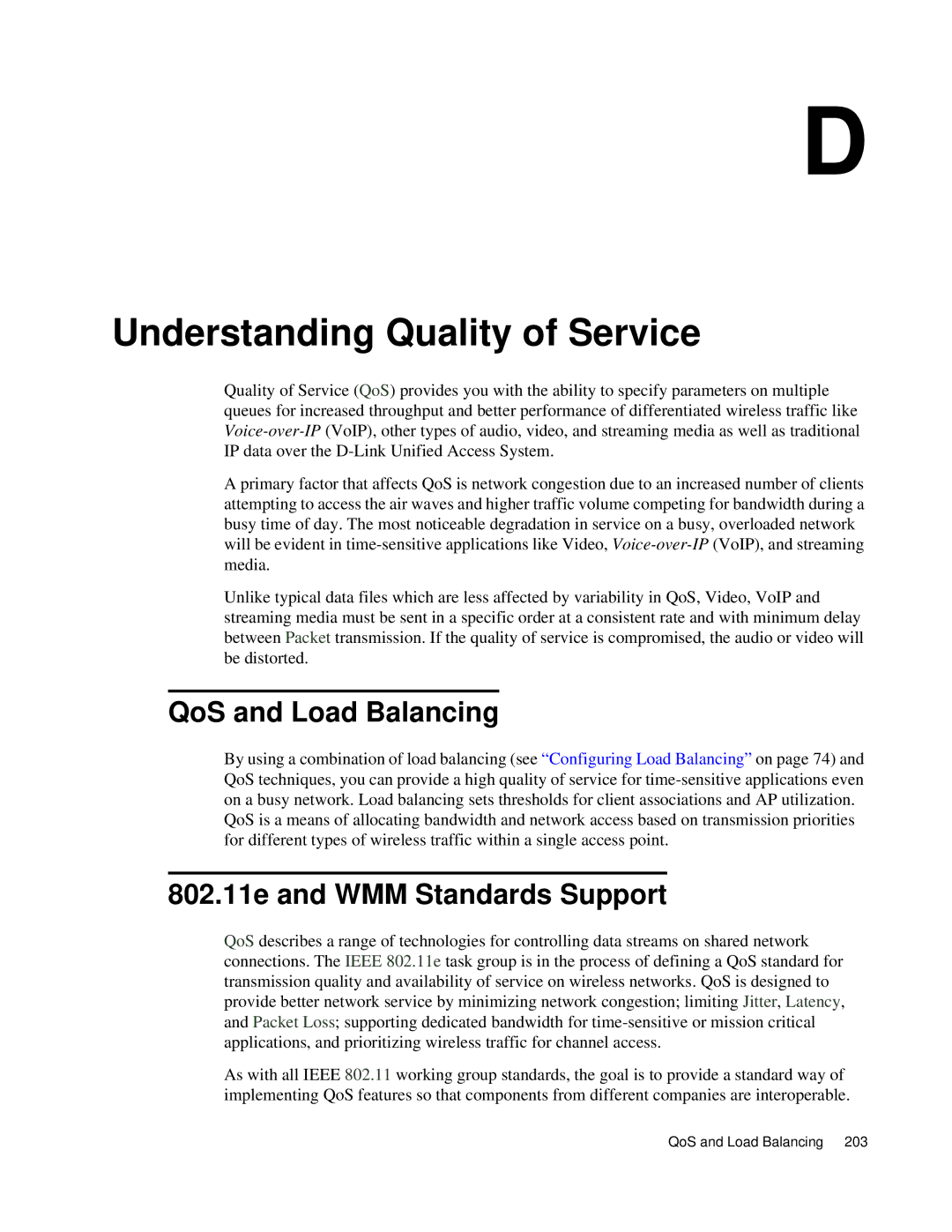
D
Understanding Quality of Service
Quality of Service (QoS) provides you with the ability to specify parameters on multiple queues for increased throughput and better performance of differentiated wireless traffic like
A primary factor that affects QoS is network congestion due to an increased number of clients attempting to access the air waves and higher traffic volume competing for bandwidth during a busy time of day. The most noticeable degradation in service on a busy, overloaded network will be evident in
Unlike typical data files which are less affected by variability in QoS, Video, VoIP and streaming media must be sent in a specific order at a consistent rate and with minimum delay between Packet transmission. If the quality of service is compromised, the audio or video will be distorted.
QoS and Load Balancing
By using a combination of load balancing (see “Configuring Load Balancing” on page 74) and QoS techniques, you can provide a high quality of service for
QoS is a means of allocating bandwidth and network access based on transmission priorities for different types of wireless traffic within a single access point.
802.11e and WMM Standards Support
QoS describes a range of technologies for controlling data streams on shared network connections. The IEEE 802.11e task group is in the process of defining a QoS standard for transmission quality and availability of service on wireless networks. QoS is designed to provide better network service by minimizing network congestion; limiting Jitter, Latency, and Packet Loss; supporting dedicated bandwidth for
As with all IEEE 802.11 working group standards, the goal is to provide a standard way of implementing QoS features so that components from different companies are interoperable.
QoS and Load Balancing 203
